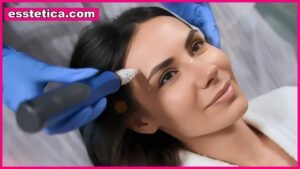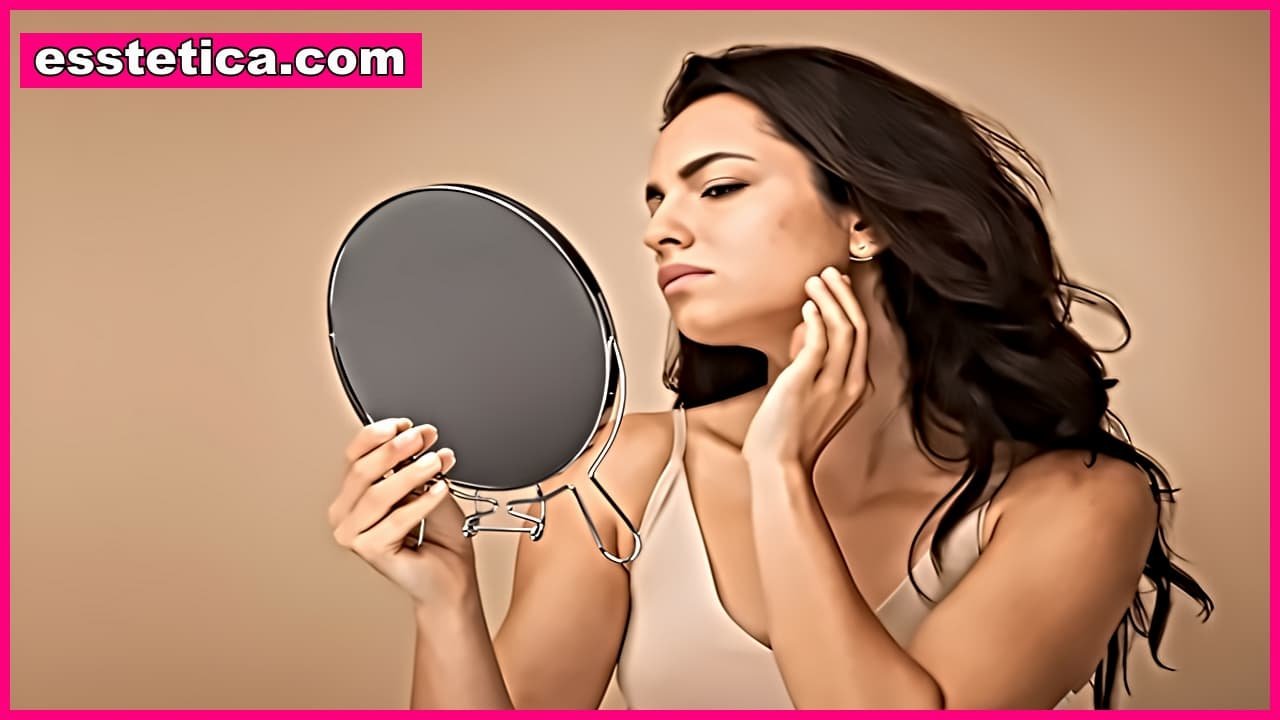Introduction
They’re small, clear, and often barely noticeable — yet they’ve become one of the biggest skincare trends in recent years. Acne patches, sometimes called pimple patches or hydrocolloid patches, are those little round stickers people slap onto blemishes before bed (or even before a meeting if they’re bold enough).
At first glance, they might seem too good to be true. How could a thin patch possibly shrink an angry pimple overnight? The truth is, these tiny skin-savers rely on surprisingly smart science.
Behind that discreet dot lies a powerful mechanism that works silently — absorbing impurities, protecting wounds, and creating the perfect healing environment. And no, it’s not magic — it’s biology and chemistry teaming up.
So, let’s peel back (literally) the layers of how acne patches actually work — and why they might just deserve a permanent place in your skincare routine.
The Science Behind Acne Patches
What Are Acne Patches, Really?
Acne patches are small, adhesive hydrocolloid dressings designed to draw out pus, oil, and impurities from pimples while protecting the area from bacteria and irritation. Originally used in hospitals to heal wounds, hydrocolloid technology found its skincare spotlight thanks to its healing and absorbent abilities.
They’re typically made from gel-forming agents (like gelatin or pectin) combined with a thin film that locks moisture in while keeping contaminants out.
Once placed on a blemish, they start to interact with the fluids inside the pimple, working quietly but effectively while you go about your day — or sleep.
How Acne Forms (A Quick Refresher)
Before we get into how patches fix pimples, it helps to know what they’re fighting.
Acne begins when a hair follicle gets clogged with oil (sebum) and dead skin cells. Add bacteria (Cutibacterium acnes) and inflammation, and voilà — a red, swollen pimple appears.
Now imagine a hydrocolloid patch stepping in like a mini medic, covering that spot, and helping your skin heal faster. Here’s how it actually happens.
How Acne Patches Work Step by Step
Step 1: Absorption Through Hydrocolloid Magic
Hydrocolloid is the true hero ingredient here. It works like a sponge.
When you apply a patch to a pimple, the hydrocolloid layer starts absorbing exudate — a mix of fluid, oil, and debris that leaks from the blemish. As it absorbs this fluid, the patch swells slightly and turns white, indicating it’s done its job.
Think of it like this: the patch acts as a vacuum for gunk, pulling impurities out of the skin and trapping them inside the gel-like structure.
This process not only helps reduce the size of the pimple but also keeps the area clean, moist, and protected — three essential factors for faster healing.
Step 2: Creating a Protective Barrier
One of the most underrated functions of acne patches is their ability to protect your skin from you.
Let’s be honest — most people can’t resist the urge to pick, poke, or squeeze a pimple. But touching or popping it often leads to inflammation, infection, and scarring.
The patch forms a physical shield between your fingers and the blemish, preventing contamination from external bacteria, dirt, and pollutants. It also helps maintain an optimal level of moisture on the skin’s surface, which promotes faster wound recovery.
Essentially, it’s like wrapping a wound in a clean bandage — but invisible and skincare-friendly.
Step 3: Promoting Healing and Reducing Inflammation
By absorbing excess fluid and protecting the skin, acne patches create a micro-environment that supports the natural healing process.
A moist healing environment is scientifically proven to speed up skin regeneration while minimizing redness and scarring.
This means that instead of drying your pimple out (like traditional spot treatments with benzoyl peroxide or salicylic acid), patches help it heal from within by maintaining balance — not stripping it dry.
The result? A calmer, flatter, less inflamed blemish by morning.
Step 4: Delivering Active Ingredients (For Advanced Patches)
Not all acne patches are created equal.
The newer generation of patches goes beyond simple hydrocolloid absorption. Some are infused with active ingredients such as:
-
Salicylic acid: to unclog pores and exfoliate dead skin cells.
-
Tea tree oil: for its antibacterial and anti-inflammatory properties.
-
Niacinamide: to reduce redness and strengthen the skin barrier.
-
Hyaluronic acid: to keep the skin hydrated while healing.
These medicated patches provide a dual-action approach — they draw out impurities while simultaneously delivering acne-fighting ingredients directly to the affected area.
This targeted treatment can often be more effective (and gentler) than applying harsh creams all over your face.

1. Hydrocolloid Patches (Standard Type)
Best for whiteheads and popped pimples. They absorb fluid, reduce swelling, and protect healing skin.
2. Microneedle Patches
These futuristic patches have tiny dissolvable needles that penetrate the upper layer of the skin to deliver active ingredients deeper into the pore. Perfect for under-the-skin pimples that haven’t surfaced yet.
3. Medicated Patches
Infused with acne-fighting ingredients like salicylic acid or tea tree oil, these are ideal for inflamed or cystic acne.
4. Invisible Day Patches
Ultra-thin versions designed for daytime wear under makeup — perfect for discreet protection while you’re out and about.
When Should You Use Acne Patches?
Acne patches work best at certain stages of a pimple’s life cycle.
They’re most effective on surface-level whiteheads, pus-filled pimples, or popped spots that need protection while healing.
However, they’re less effective on:
-
Deep cystic acne (since the inflammation is too far beneath the skin), or
-
Blackheads and comedones (which don’t produce enough exudate for absorption).
In those cases, traditional acne treatments may work better.
The Psychology of Acne Patches
Here’s an underrated benefit: behavioral control.
Wearing an acne patch isn’t just a skincare treatment — it’s also a psychological barrier that stops compulsive touching and picking.
This small act can make a massive difference in preventing scarring and post-inflammatory hyperpigmentation (PIH).
When your skin is healing, the less interference, the better — and patches make that easier than ever.
Do Acne Patches Really Work Overnight?
This depends on what you expect.
Acne patches are not magic erasers — but they do work quickly for the right kind of pimples. Many users notice a visible reduction in swelling and redness within 6 to 8 hours, especially for whiteheads.
However, for deeper or cystic acne, you might need multiple applications or complementary treatments.
What’s undeniable is that acne patches do help speed up healing, reduce inflammation, and minimize scarring risk — all without drying out your skin.
How to Use Acne Patches Correctly
Step 1: Cleanse Your Skin
Start with clean, dry skin. Oils or moisturizer residue can reduce the patch’s adhesion.
Step 2: Apply Directly to the Pimple
Place the patch on the blemish, pressing gently for a few seconds to secure it.
Step 3: Leave It On
Let the patch sit for at least 6 to 8 hours — overnight is best. Avoid touching or moving it.
Step 4: Remove and Replace
Once the patch turns white or opaque, it’s absorbed impurities and can be replaced if needed.
✅ Struggling with acne? Discover the 2 natural solutions I personally recommend:
👉 Get Ninja Health Now — Launch Your Health Site in 60 Seconds
Benefits of Using Acne Patches
Instant Protection
Shields pimples from bacteria, dirt, and your own hands.
Faster Healing
Creates an optimal environment for skin repair by maintaining moisture.
Less Scarring
Prevents secondary infection and trauma, reducing scar formation.
Discreet & Convenient
Nearly invisible and easy to use anytime, anywhere — even under makeup.
Chemical-Free Options
Great for people with sensitive skin or those avoiding harsh ingredients.
Possible Drawbacks
Of course, no skincare solution is perfect.
-
Limited depth: Patches don’t penetrate deep cystic acne.
-
Adhesion issues: Oily skin may cause them to slip off.
-
Mild irritation: Some users may experience slight redness or itching (especially with medicated versions).
Still, for most people, the benefits far outweigh the downsides.
Expert Insight: Dermatologists Weigh In
Dermatologists often support acne patches — not as a standalone cure, but as part of a comprehensive acne treatment plan.
Dr. Whitney Bowe, a dermatologist and researcher, notes that hydrocolloid dressings “encourage faster, cleaner healing by creating a moist environment and minimizing picking behavior.”
In other words: acne patches don’t replace good skincare, but they make healing safer, quicker, and cleaner.
The Future of Acne Patch Technology
The skincare industry isn’t stopping here. Innovations in nanotechnology and bioactive delivery systems are already emerging.
Future acne patches may feature smart sensors that monitor inflammation or controlled-release systems that deliver medication over time.
We’re moving toward a world where your acne patch could be a personalized healing device — tailored to your skin’s exact needs.
Conclusion: Small Patch, Big Impact
At the end of the day, acne patches prove that simple ideas can make a huge difference.
These little hydrocolloid heroes aren’t just trendy — they’re backed by real science. By drawing out impurities, reducing inflammation, and protecting your skin, they let your body’s natural healing process do the rest.
They won’t cure acne overnight, and they’re not meant for every type of pimple. But for those surface-level breakouts that pop up right before a date, an interview, or just when you want to feel your best — they’re nothing short of revolutionary.
So next time you spot that unwanted guest on your face, skip the squeezing, skip the stress — and simply stick it, sleep it, and heal it. 🌙✨
✅ Struggling with acne? Discover the 2 natural solutions I personally recommend:
👉 Get Ninja Health Now — Launch Your Health Site in 60 Seconds
YOU MAY ALSO LIKE:
How Acne Forms: The Hidden Science Behind Those Pesky Breakouts


 What Acne Means: Understanding the Real Story Behind Your Breakouts
What Acne Means: Understanding the Real Story Behind Your Breakouts What Acne Means on Your Face: The Hidden Map of Your Skin
What Acne Means on Your Face: The Hidden Map of Your Skin



[…] How Acne Patches Work: The Tiny Stickers That Heal Big Breakouts […]
[…] How Acne Patches Work: The Tiny Stickers That Heal Big Breakouts […]
[…] How Acne Patches Work: The Tiny Stickers That Heal Big Breakouts […]